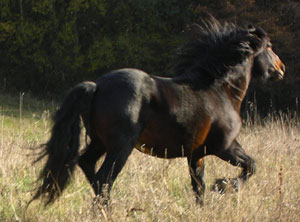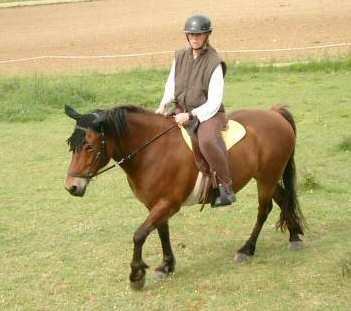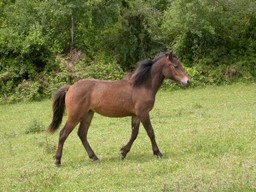



|
Landais Qualities
Qualities of the Landais horse are that they have a face that is easily detectable as it bodes a large amount of space, as well as a gap that sits in between their eyes. They have an elegant reputation as horses and are used for riding and harness purposes alike. Usually dark in coating, these beautiful creatures are found in France, Spain, and Bordeaux. Commonly used for draft duties and for under saddle operations, they can also be spotted anywhere else along the coast of the Bay of Biscay. This is one common breed you will find in children’s riding lessons and also a solid choice for beginning riders to choose as well.
Landais Temperament
Landais horses are well known for their willful temperaments. Generally, they are kind and gentle animals, but like all horses, they can be a handful in their early training years. Graceful as full grown animals, for the most part they can be easily trained and are considered very intelligent.
Landais Appearance
The Landais horse stands about thirteen hands in adult size. They are generally black, bay, chestnut, and other brown shades. Neat in appearance, these animals have a high set tail, attractive head, and sloping shoulders and quarters. Having a short and compact size for their backs makes this a perfect choice for riding for small children. Also, they have muscular legs and a large wither. Most consider them a small Arab style horse, but they are far from small creatures. In fact, they are very strong and robust.
Landais Upkeep
The upkeep duties associated with owning a Landais are minimal. They are simple to care for and can fend for themselves most of the time. The Landais is fair tempered, making them ideal for working on farms and aiding the families in herding cattle and sheep if needed. They do not bode any major illnesses and have a solid reputation for being a loving and easy horse.
Landais History
Coming from the Southwest of France, the Landais horse breed originates from the sandy beaches of Europe. They can also be referred to as the "Barthais" horse breed, but this is not the same horse; it is simply the other breed the Landais breed was bred with. Most experts do not have any evidence providing exactly when these two were bred. As time progressed, they were bred with additional Arab blood lines to create a bigger, stronger, and more refined horse. Currently, they appear to look more like an Arab horse breed, just a smaller one. Sometime in the beginning of the twentieth century, there were an estimated two thousand of them roaming wildly worldwide. Just after the second World War, they were decreasing in popularity, but once the seventies came about a studbook was produced and they have made a nice transition.
|